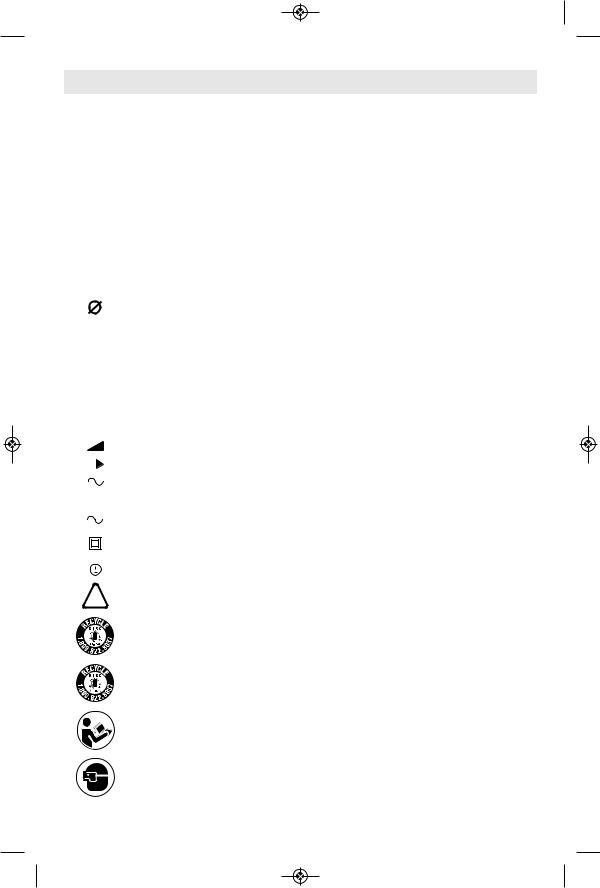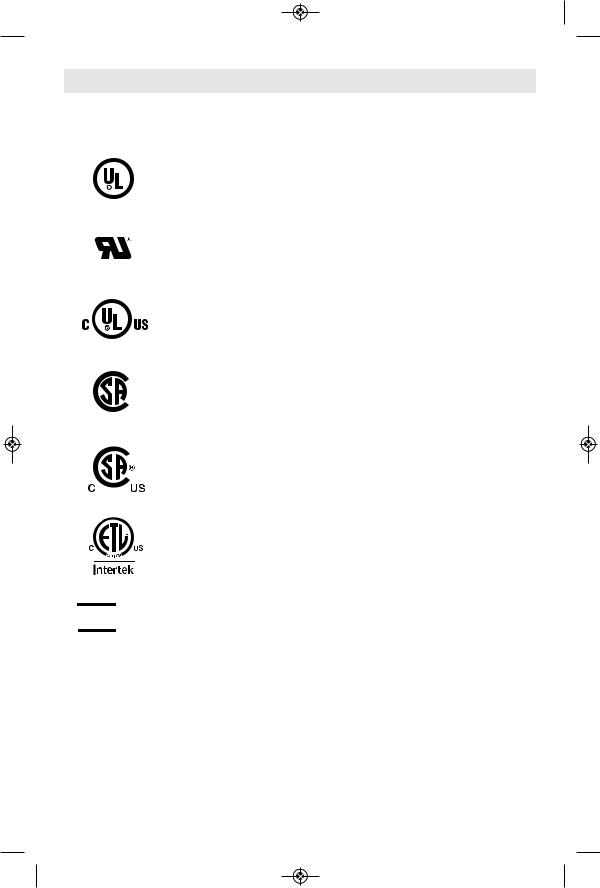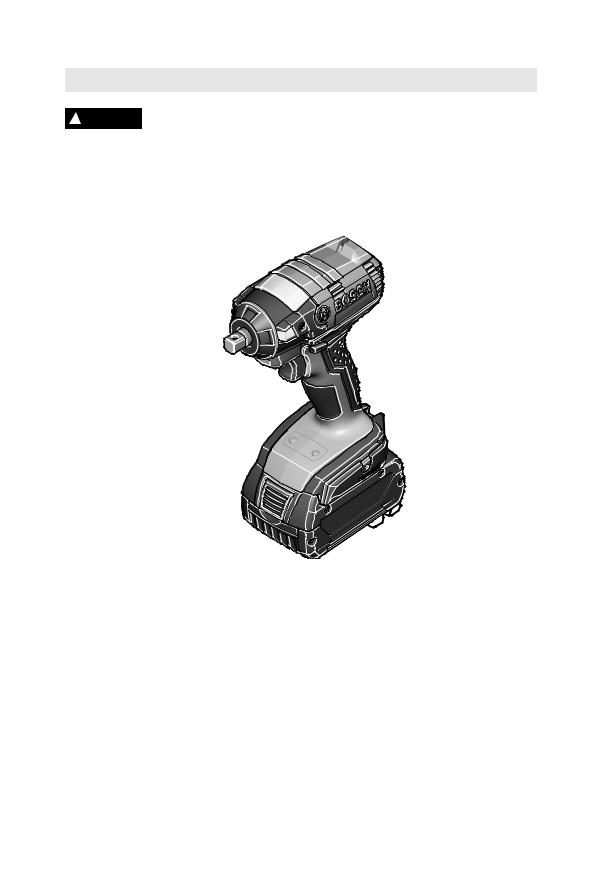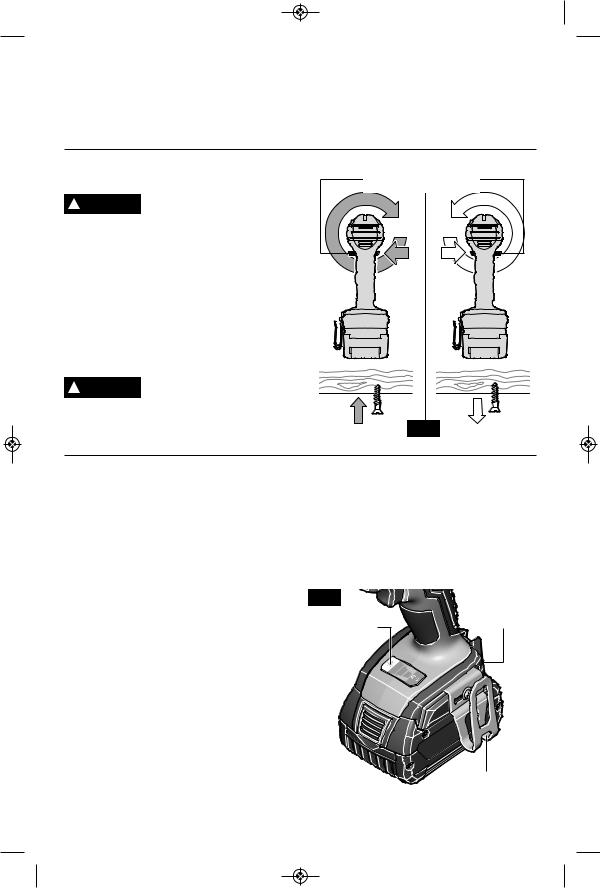Bosch IWBH182-01L Owner’s Manual

 BM 2610033029 10-13_BM 2610033029 09-13.qxp 10/1/13 11:49 AM Page 1
BM 2610033029 10-13_BM 2610033029 09-13.qxp 10/1/13 11:49 AM Page 1
IMPORTANT: |
IMPORTANT : |
IMPORTANTE: |
Read Before Using |
Lire avant usage |
Leer antes de usar |
|
|
|
Operating/Safety Instructions 
 Consignes de fonctionnement/sécurité
Consignes de fonctionnement/sécurité
Instrucciones de funcionamiento y seguridad
IDH182
IWBH182
|
Call Toll Free for |
Pour obtenir des informations |
Llame gratis para |
|
|
Consumer Information |
et les adresses de nos centres |
obtener información |
|
||
|
& Service Locations |
de service après-vente, |
para el consumidor y |
|
|
|
|
appelez ce numéro gratuit |
ubicaciones de servicio |
|
|
|
|
|
|
||
|
1-877-BOSCH99 (1-877-267-2499) www.boschtools.com |
|
|
||
|
|
|
|
|
|
For English Version |
Version française |
Versión en español |
|
||
|
See page 2 |
Voir page 14 |
Ver la página 34 |
|
|
|
|
|
|
|
|

 BM 2610033029 10-13_BM 2610033029 09-13.qxp 10/1/13 11:49 AM Page 2
BM 2610033029 10-13_BM 2610033029 09-13.qxp 10/1/13 11:49 AM Page 2
|
General Power Tool Safety Warnings |
|
Read all safety warnings and all instructions. Failure to follow the warnings |
! WARNING |
|
|
and instructions may result in electric shock, fire and/or serious injury. |
|
SAVE ALL WARNINGS AND INSTRUCTIONS FOR FUTURE REFERENCE
The term “power tool” in the warnings refers to your mains-operated (corded) power tool or battery-operated (cordless) power tool.
Work area safety
Keep work area clean and well lit. Cluttered or dark areas invite accidents.
Do not operate power tools in explosive atmospheres, such as in the presence of flammable liquids, gases or dust. Power tools create sparks which may ignite the dust or fumes.
Keep children and bystanders away while operating a power tool. Distractions can cause you to lose control.
Electrical safety
Power tool plugs must match the outlet. Never modify the plug in any way. Do not use any adapter plugs with earthed (grounded) power tools. Unmodified plugs and matching outlets will reduce risk of electric shock.
Avoid body contact with earthed or grounded surfaces such as pipes, radiators, ranges and refrigerators. There is an increased risk of electric shock if your body is earthed or grounded.
Do not expose power tools to rain or wet conditions. Water entering a power tool will increase the risk of electric shock.
Do not abuse the cord. Never use the cord for carrying, pulling or unplugging the power tool. Keep cord away from heat, oil, sharp edges or moving parts. Damaged or entangled cords increase the risk of electric shock.
When operating a power tool outdoors, use an extension cord suitable for outdoor use. Use of a cord suitable for outdoor use reduces the risk of electric shock.
If operating a power tool in a damp location is unavoidable, use a Ground Fault Circuit Interrupter (GFCI) protected supply. Use of an GFCI reduces the risk of electric shock.
Personal safety
Stay alert, watch what you are doing and use common sense when operating a
power tool. Do not use a power tool while you are tired or under the influence of drugs, alcohol or medication. A moment of inattention while operating power tools may result in serious personal injury.
Use personal protective equipment. Always wear eye protection. Protective equipment such as dust mask, non-skid safety shoes, hard hat, or hearing protection used for appropriate conditions will reduce personal injuries.
Prevent unintentional starting. Ensure the switch is in the off-position before connecting to power source and / or battery pack, picking up or carrying the tool.
Carrying power tools with your finger on the switch or energizing power tools that have the switch on invites accidents.
Remove any adjusting key or wrench before turning the power tool on. A wrench or a key left attached to a rotating part of the power tool may result in personal injury.
Do not overreach. Keep proper footing and balance at all times. This enables better control of the power tool in unexpected situations.
Dress properly. Do not wear loose clothing or jewelry. Keep your hair, clothing and gloves away from moving parts. Loose clothes, jewelry or long hair can be caught in moving parts.
If devices are provided for the connection of dust extraction and collection facilities, ensure these are connected and properly used. Use of dust collection can reduce dustrelated hazards.
Power tool use and care
Do not force the power tool. Use the correct power tool for your application. The correct power tool will do the job better and safer at the rate for which it was designed.
Do not use the power tool if the switch does not turn it on and off. Any power tool that cannot be controlled with the switch is dangerous and must be repaired.
-2-

 BM 2610033029 10-13_BM 2610033029 09-13.qxp 10/1/13 11:49 AM Page 3
BM 2610033029 10-13_BM 2610033029 09-13.qxp 10/1/13 11:49 AM Page 3
Disconnect the plug from the power source and/or the battery pack from the power tool before making any adjustments, changing accessories, or storing power tools. Such preventive safety measures reduce the risk of starting the power tool accidentally.
Store idle power tools out of the reach of children and do not allow persons unfamiliar with the power tool or these instructions to operate the power tool. Power tools are dangerous in the hands of untrained users.
Maintain power tools. Check for misalignment or binding of moving parts, breakage of parts and any other condition that may affect the power tool’s operation. If damaged, have the power tool repaired before use.
Many accidents are caused by poorly maintained power tools.
Keep cutting tools sharp and clean. Properly maintained cutting tools with sharp cutting edges are less likely to bind and are easier to control.
Use the power tool, accessories and tool bits etc. in accordance with these instructions, taking into account the working conditions and the work to be performed. Use of the power tool for operations different from those intended could result in a hazardous situation.
Battery tool use and care
Recharge only with the charger specified by the manufacturer. A charger that is suitable for one type of battery pack may create a risk of fire when used with another battery pack.
Use power tools only with specifically designated battery packs. Use of any other battery packs may create a risk of injury and fire.
When battery pack is not in use, keep it away from other metal objects like paper clips, coins, keys, nails, screws, or other small metal objects, that can make a connection from one terminal to another.
Shorting the battery terminals together may cause burns or a fire.
Under abusive conditions, liquid may be ejected from the battery; avoid contact. If contact accidentally occurs, flush with water. If liquid contacts eyes, additionally seek medical help. Liquid ejected from the battery may cause irritation or burns.
Service
Have your power tool serviced by a qualified repair person using only identical replacement parts. This will ensure that the safety of the power tool is maintained.
Safety Rules for Cordless Impact Drivers
Wear ear protectors when impact drilling.
Exposure to noise can cause hearing loss.
Use auxiliary handle(s), if supplied with the tool. Loss of control can cause personal injury.
Hold power tool by insulated gripping surfaces, when performing an operation where the cutting accessory may contact hidden wiring. Cutting accessory contacting a "live" wire may make exposed metal parts of the power tool "live" and could give the operator an electric shock.
Use clamps or another practical way to secure and support the workpiece to a stable platform. Holding the work by hand or against your body leaves it unstable and may lead to loss of control.
Do not drill, fasten or break into existing walls or other blind areas where electrical wiring may exist. If this situation is
unavoidable, disconnect all fuses or circuit breakers feeding this worksite.
Always wear safety goggles or eye protection when using this tool.
Wear ear protectors when using the tool for extended periods. Prolonged exposure to high intensity noise can cause hearing loss.
Use thick cushioned gloves and limit the exposure time by taking frequent rest periods. Vibration caused by hammer-drill action may be harmful to your hands and arms.
Secure the material being fastened. Never hold it in your hand or across your legs.
Unstable support can cause loss of control and injury.
Avoid accidental starting. Be sure the forward/reverse switch is in the off position before inserting battery pack.
-3-

 BM 2610033029 10-13_BM 2610033029 09-13.qxp 10/1/13 11:49 AM Page 4
BM 2610033029 10-13_BM 2610033029 09-13.qxp 10/1/13 11:49 AM Page 4
Carrying appliances with your finger on the switch or inserting the battery pack into an appliance with the switch on invites accidents.
Remove battery pack before changing accessories. Accidental starting may occur because battery appliances with a battery inserted are in the operative condition.
Be prepared for a reaction torque when “seating” or removing a fastener. The screwdriver housing may tend to twist in the opposite direction of bit rotation when “seating” or removing a fastener depending on the torque setting of the tool.
Do not use dull or damaged bits and accessories. When installing an accessory, insert the shank of the bit well within the chuck. Be sure the chuck has locked onto the bit correctly.
Do not run the tool while carrying it at your side. A spinning bit could become entangled with clothing and injury may result.
Place the tool onto the fastener only when the screwdriver is switched off.
Rotating driver tools can slide off the fastener.
Do not use this tool as a drill. Tools equipped with shut-off clutches are not designed for drilling applications. The clutch can shut off automatically and without warning.
Be careful when driving long screws – there is a risk of sliding off the fastener head depending on type of socket or bit used. First test the run-down of a fastener and pay attention during the screw driving process to ensure you do not injure yourself if the tool bit or socket slides off of the fastener.
Additional Safety Warnings
GFCI and personal protection devices like electrician’s rubber gloves and footwear will further enhance your personal safety.
Do not use AC only rated tools with a DC power supply. While the tool may appear to work, the electrical components of the AC rated tool are likely to fail and create a hazard to the operator.
Keep handles dry, clean and free from oil and grease. Slippery hands cannot safely control the power tool.
Develop a periodic maintenance schedule for your tool. When cleaning a tool be careful not to disassemble any portion of the tool since internal wires may be misplaced or pinched or safety guard return springs may be improperly mounted.
Certain cleaning agents such as gasoline, carbon tetrachloride, ammonia, etc. may damage plastic parts.
Ensure the switch is in the off position before inserting battery pack. Inserting the
battery pack into power tools that have the switch on invites accidents.
Some dust created by power sanding, sawing, grinding, drilling, and other construction
activities contains chemicals known to cause cancer, birth defects or other reproductive harm. Some examples of these chemicals are:
•Lead from lead-based paints,
•Crystalline silica from bricks and cement and other masonry products, and
•Arsenic and chromium from chemicallytreated lumber.
Your risk from these exposures varies, depending on how often you do this type of work. To reduce your exposure to these chemicals: work in a well ventilated area, and work with approved safety equipment, such as those dust masks that are specially designed to filter out microscopic particles.
-4-

 BM 2610033029 10-13_BM 2610033029 09-13.qxp 10/1/13 11:49 AM Page 5
BM 2610033029 10-13_BM 2610033029 09-13.qxp 10/1/13 11:49 AM Page 5
Symbols
IMPORTANT: Some of the following symbols may be used on your tool. Please study them and learn their meaning. Proper interpretation of these symbols will allow you to operate the tool better and safer.
Symbol |
Name |
Designation/Explanation |
|||||||
|
|
|
|
|
|
|
|
|
|
|
|
|
|
V |
Volts |
Voltage (potential) |
|||
|
|
|
|
|
|
|
|
|
|
|
|
|
|
A |
Amperes |
Current |
|||
|
|
|
|
|
|
|
|
|
|
|
|
Hz |
Hertz |
Frequency (cycles per second) |
|||||
|
|
|
|
|
|
|
|
|
|
|
|
|
W |
Watt |
Power |
||||
|
|
|
|
|
|
|
|
|
|
|
|
|
kg |
Kilograms |
Weight |
||||
|
|
|
|
|
|
|
|
|
|
|
min |
Minutes |
Time |
||||||
|
|
|
|
|
|
|
|
|
|
|
|
|
|
s |
Seconds |
Time |
|||
|
|
|
|
|
|
|
|
|
|
|
|
|
|
|
|
|
|
Diameter |
Size of drill bits, grinding wheels, etc. |
|
|
|
|
|
|
|
|
|
|
|
|
|
n0 |
No load speed |
Rotational speed, at no load |
||||
|
|
|
|
n |
Rated speed |
Maximum attainable speed |
|||
|
|
|
|
|
|
|
|
|
|
.../min |
Revolutions or reciprocation |
Revolutions, strokes, surface speed, |
|||||||
|
|
|
|
|
|
|
|
per minute |
orbits etc. per minute |
|
|
|
|
|
|
|
|
|
|
0 |
|
|
Off position |
Zero speed, zero torque... |
|||||
|
|
|
|
|
|
|
|
|
|
1, 2, 3, ... |
Selector settings |
Speed, torque or position settings. |
|||||||
I, II, III, |
|
Higher number means greater speed |
|||||||
|
|
|
|
|
|
|
|
|
|
0 |
|
|
|
|
|
Infinitely variable selector with off |
Speed is increasing from 0 setting |
||
|
|
|
|
|
|
|
|
|
|
|
|
|
|
|
|
|
|
Arrow |
Action in the direction of arrow |
|
|
|
|
|
|
|
|
||
|
|
|
|
|
|
|
|
|
|
|
|
|
|
|
|
|
|
Alternating current |
Type or a characteristic of current |
|
|
|
|
|
|
|
|
|
|
|
|
|
|
|
|
|
|
Direct current |
Type or a characteristic of current |
|
|
|
|
|
|
|
|
||
|
|
|
|
|
|
|
|
|
|
|
|
|
|
|
|
|
|
Alternating or direct current |
Type or a characteristic of current |
|
|
|
|
|
|
|
|
||
|
|
|
|
|
|
|
|
|
|
|
|
|
|
|
|
|
|
Class II construction |
Designates Double Insulated |
|
|
|
|
|
|
|
|
||
|
|
|
|
|
|
|
|
|
Construction tools. |
|
|
|
|
|
|
|
|
|
|
|
|
|
|
|
|
|
|
|
|
|
|
|
|
|
|
|
|
Earthing terminal |
Grounding terminal |
|
|
|
|
|
|
|
|
||
|
|
|
|
|
|
|
|
|
|
|
|
|
|
|
|
|
|
Warning symbol |
Alerts user to warning messages |
|
|
|
|
|
|
|
|
|
|
|
|
|
|
|
|
|
|
|
|
|
|
|
|
|
|
|
|
Li-ion RBRC seal |
Designates Li-ion battery recycling |
|
|
|
|
|
|
|
|
|
program |
|
|
|
|
|
|
|
|
|
|
|
|
|
|
|
|
|
|
Ni-Cad RBRC seal |
Designates Ni-Cad battery recycling |
|
|
|
|
|
|
|
|
|
program |
|
|
|
|
|
|
|
|
|
|
|
|
|
|
|
|
|
|
Read manual symbol |
Alerts user to read manual |
|
|
|
|
|
|
|
|
|
|
|
|
|
|
|
|
|
|
Wear eye protection symbol |
Alerts user to wear eye protection |
|
|
|
|
|
|
|
|
|
|
-5-

 BM 2610033029 10-13_BM 2610033029 09-13.qxp 10/1/13 11:49 AM Page 6
BM 2610033029 10-13_BM 2610033029 09-13.qxp 10/1/13 11:49 AM Page 6
Symbols (continued)
IMPORTANT: Some of the following symbols may be used on your tool. Please study them and learn their meaning. Proper interpretation of these symbols will allow you to operate the tool better and safer.
This symbol designates that this tool is listed by Underwriters Laboratories.
This symbol designates that this component is recognized by Underwriters
Laboratories.
This symbol designates that this tool is listed by Underwriters Laboratories, to United States and Canadian Standards.
This symbol designates that this tool is listed by the Canadian Standards Association.
This symbol designates that this tool is listed by the Canadian Standards
Association, to United States and Canadian Standards.
This symbol designates that this tool is listed by the Intertek Testing
Services, to United States and Canadian Standards.



 This symbol designates that this tool complies to NOM Mexican Standards.
This symbol designates that this tool complies to NOM Mexican Standards.
-6-

 BM 2610033029 10-13_BM 2610033029 09-13.qxp 10/1/13 11:49 AM Page 7
BM 2610033029 10-13_BM 2610033029 09-13.qxp 10/1/13 11:49 AM Page 7
Functional Description and Specifications
Disconnect battery pack from tool before making any assembly, adjustments or changing accessories. Such preventive safety measures
reduce the risk of starting the tool accidentally.
Cordless Impact Drivers
|
FIG. 1 |
|
LOCKING |
VENTILATION |
|
OPENINGS |
||
SLEEVE |
||
|
||
OUTPUT DRIVE |
FORWARD/REVERSING |
|
|
||
BIT |
LEVER & TRIGGER LOCK |
|
|
||
BUILT IN WORK LIGHT |
RUBBERIZED GRIP |
|
VARIABLE SPEED |
||
|
||
TRIGGER SWITCH |
|
|
WORK LIGHT |
BIT AND BIT |
|
ON/OFF BUTTON |
STORAGE AREA |
|
VARIABLE SPEED |
|
|
CONTROL INDICATOR |
|
VARIABLE SPEED |
BELT CLIP |
|
SELECTOR |
||
(Optional Accessory) |
||
|
||
BATTERY PACK |
BATTERY PACK |
|
RELEASE BUTTON |
||
|
Model number |
IDH182 |
|||||
Voltage rating |
18 V |
|
|
|
|
|
|
|
|||||
|
|
|
|
|
||
No load speed |
n0 0-2,800/min |
|||||
Impact rate |
0-3,200/min |
|||||
Maximum torque |
1,600 in-lbs |
|||||
Maximum Capacities |
|
|
|
|
|
|
Chuck size |
1/4" Hex-shank with power groove |
|||||
Output drive |
1/2" Square drive |
|||||
Battery Packs/Chargers
Please refer to the Charger Manual included with your tool.
NOTE: For tool specifications refer to the nameplate on your tool.
-7-

 BM 2610033029 10-13_BM 2610033029 09-13.qxp 10/1/13 11:49 AM Page 8
BM 2610033029 10-13_BM 2610033029 09-13.qxp 10/1/13 11:49 AM Page 8
Functional Description and Specifications
Disconnect battery pack from tool before making any assembly, adjustments or changing accessories. Such preventive safety measures
reduce the risk of starting the tool accidentally.
Cordless Impact Wrenches
FIG. 1a
|
VENTILATION |
|
OPENINGS |
OUTPUT DRIVE |
FORWARD/REVERSING |
|
LEVER & TRIGGER LOCK |
BUILT IN WORK LIGHT |
RUBBERIZED GRIP |
|
|
VARIABLE SPEED |
|
TRIGGER SWITCH |
|
WORK LIGHT |
|
ON/OFF BUTTON |
|
VARIABLE SPEED
CONTROL INDICATOR
VARIABLE SPEED |
BELT CLIP |
|
SELECTOR |
||
(Optional Accessory) |
||
|
||
BATTERY PACK |
BATTERY PACK |
|
RELEASE BUTTON |
||
|
Model number |
IWBH182 |
|||||
Voltage rating |
18 V |
|
|
|
|
|
|
|
|||||
|
|
|
|
|
||
No load speed |
n0 0-2,800/min |
|||||
Impact rate |
0-3,200 |
|
|
|||
Maximum torque |
1,600 in-lbs |
|||||
Maximum Capacities |
|
|
|
|
|
|
Output drive |
1/2" Square drive |
|||||
Battery Packs/Chargers
Please refer to the Charger Manual included with your tool.
NOTE: For tool specifications refer to the nameplate on your tool.
-8-

 BM 2610033029 10-13_BM 2610033029 09-13.qxp 10/1/13 11:49 AM Page 9
BM 2610033029 10-13_BM 2610033029 09-13.qxp 10/1/13 11:49 AM Page 9
Assembly
Disconnect battery pack ! WARNING from tool before making
any assembly, adjustments or changing accessories. Such preventive safety measures reduce the risk of starting the tool accidentally.
INSERTING AND REMOVING
ACCESSORIES (Model IDH182 only)
To avoid loss of control, ! WARNING ensure bit is locked in chuck
by pulling on bit after it has been inserted.
The chuck accepts only standard 1/4" hexagonal shank accessories with power groove.
Your tool is equipped with a Socket-Ready™ quick release chuck. The Socket-Ready™ chuck includes a 1/4" hex chuck designed for impact ready bits and accessories and a 1/2" square drive for use with impact wrench sockets.
When using the 1/4" hex chuck insert a bit or accessory by simply pulling the locking sleeve forward and inserting the desired accessory into the chuck and release locking sleeve (Fig. 2). To remove a bit or accessory, pull locking sleeve forward and simply remove it from the chuck.
(Model IWBH182 & IDH182 only)
When using the 1/2" square drive, attach only high quality impact ready accessories with the proper size square drive designed for use with impact wrenches. To install a socket, simply push completely onto output drive.
LOCKING SLEEVE
FIG. 2
CHUCK
SCREWDRIVER |
BIT |
BIT HOLDER
SCREWDRIVER BIT |
FIG. 3
SOCKET
OUTPUT
DRIVE
Operating Instructions
INTENDED USE
This tool is intended for the fastening and loosening of bolts, nuts and various threaded fasteners. This tool is not intended for use as a drill.
VARIABLE SPEED CONTROLLED
TRIGGER SWITCH
Your tool is equipped with a variable speed trigger switch. The tool can be turned "ON" or "OFF" by squeezing or releasing the trigger. The speed can be adjusted from the minimum to maximum nameplate RPM by the pressure you apply to the trigger. Apply more pressure
to increase the speed and release pressure to decrease speed (Fig. 1).
BRAKE
When the trigger switch is released it activates the brake to stop the chuck quickly. This is especially useful in the repetitive driving and removal of screws.
VARIABLE SPEED CONTROL SELECTOR
The speed of the power tool can be adjusted by toggling the variable speed control on the foot of the drill. The speed of the drill is indicated by the indicator lights at the foot of
-9-

 BM 2610033029 10-13_BM 2610033029 09-13.qxp 10/1/13 11:49 AM Page 10
BM 2610033029 10-13_BM 2610033029 09-13.qxp 10/1/13 11:49 AM Page 10
the drill located next to the variable speed control selector button. The lowest speed setting is indicated by one green LED light turned and the hightest setting is indicated by all three grean LED lights turning on (Fig. 1).
|
No -Load Speed |
impact Rate |
Setting 1: |
0-1300/min |
0-1100/min |
Setting 2: |
0-2000/min |
0-2600/min |
Setting 3: |
0-2800/min |
0-3200/min |
FORWARD/REVERSING
LEVER & TRIGGER LOCK
After tool use, lock trigger in “OFF” position to help prevent
accidental starts and accidental discharge.
Your tool is equipped with a forward/ reversing lever and trigger lock located above the trigger (Fig. 4). This lever was designed for changing rotation of the bit, and for locking the trigger in an “OFF” position.
For forward rotation, (with chuck pointed away from you) move the lever to the far left.
For reverse rotation move the lever to the far right. To activate trigger lock move lever to the center off position.
Do not change direction of ! WARNING rotation until the tool
comes to a complete stop. Shifting during rotation of the chuck can cause damage to the tool.
FORWARD/REVERSING LEVER & TRIGGER LOCK
FIG. 4
BUILT IN WORK LIGHT
Your tool is also equipped with three work lights for better visibility when driving. The lights turn on when the trigger is pulled or when the light button at the foot of the drill is activated. The light will automatically turn off within 20 second after releasing the trigger or may be turned off manually by pressing the light button at the foot of the drill (Fig. 5).
BIT STORAGE AREA
Your tool is equipped with a bit and storage area that is conveniently located in the handle base where it is always handy and unlikely to get lost or misplaced (Fig. 5).
BELT CLIP (Optional Accessory)
When the tool is attached to the belt, position yourself to avoid entanglement with surrounding objects. Unexpected entanglement could cause the tool to fall resulting in injury to the operator or bystanders.
The optional belt clip accessory will allow you to conveniently attach your tool to your belt. This feature will allow you to have both hands free
when climbing a ladder or moving to another work area.
The belt clip can be attached to either side of the tool by securing it with a mounting screw. Always make sure you securely tighten the mounting screw before use (Fig. 5).
To use clip, turn tool upside down and attach to your belt.
FIG. 5
|
BIT AND BIT |
WORK LIGHT |
STORAGE AREA |
ON/OFF BUTTON
BELT CLIP
(Optional Accessory)
-10-

 BM 2610033029 10-13_BM 2610033029 09-13.qxp 10/1/13 11:49 AM Page 11
BM 2610033029 10-13_BM 2610033029 09-13.qxp 10/1/13 11:49 AM Page 11
INSERTING AND RELEASING BATTERy PACK
Set Forward/Reversing lever to the center (off position). Slide charged battery pack into the housing until the battery pack locks into position (Fig. 6).
Your tool is equipped with a secondary locking latch to prevent the battery pack from completely falling out of the handle, should it become loose due to vibration.
To remove the battery pack, press the battery pack release button and slide the battery pack forward.
Press the battery pack release button again and slide the battery pack completely out of tool housing (Fig. 6).
FIG. 6
Operating Tips
You will extend the life of your bits and do neater work if you always put the bit in contact with the work before pulling the trigger. During the operation, hold the tool firmly and exert light, steady pressure. Too much pressure at low speed will stall the tool. Too little pressure will keep the bit from cutting and cause excess friction by sliding over the surface. This can be damaging to both tool and bit.
DRIVING WITH VARIABLE SPEED
The technique is to start slowly, increasing the speed as the screw runs down. Set the screw snugly by slowing to a stop. Prior to driving screws, pilot and clearance holes should be drilled.
Always hold the machine straight on the bolt to be tightened.
The best method to determine the right impacting/tightening duration is by means of a trial. For small screws, the right impacting/tightening duration can be reached in less then 0.5 Sec. Therefore, work with low RPM and switch the machine off immediately when the screw is tight and the impacting sound can be heard.
For screwing larger, longer wood screws into hard material, pre-drilling is the best method.
TIGHTENING TORqUE (Models IDH182 & IWBH182 only)
The tightening torque depends on the duration of the impacting/tightening action. The largest
tightening torque is achieved after approx. 6 to 10 Sec. impacting/tightening action.
The torque build-up depends on the following factors:
•Hardness of the bolts/nuts.
•Type of washer (disk washer, spring washer, seal).
•Hardness of the material to be joined.
•Lubricating effect at the surfaces of the junction.
This leads to the following application cases:
Hard case: The joining of metal to metal with a disk washer. The maximum torque is reached after a relative short impacting/tightening action.
Medium case: The joining of metal to metal where spring ring washer, disk spring washer, stud bolts or bolts/nuts with conical seats are used.
Soft case: The joining of e.g. metal to wood or insulation material.
For middle or soft joining cases, the maximum tightening torque is less as for hard cases. Therefore, a longer impacting/tightening action is necessary to arrive at the maximum tightening torque.
-11-

 BM 2610033029 10-13_BM 2610033029 09-13.qxp 10/1/13 11:49 AM Page 12
BM 2610033029 10-13_BM 2610033029 09-13.qxp 10/1/13 11:49 AM Page 12
FASTENING WITH SCREWS
This procedure shown in (Fig. 7) will enable you to fasten materials together with your tool without stripping, splitting or separating the material.
First, clamp the pieces together and drill the first hole 2/3 the diameter of the screw. If the material is soft, drill only 2/3 the proper length. If it is hard, drill the entire length.
Second, unclamp the pieces and drill the second hole the same diameter as the screw shank in the first or top piece of wood.
Third, if flat head screw is used, countersink the hole to make the screw flush with the surface. Then, simply apply even pressure when driving the screw. The screw shank clearance hole in the first piece allows the screw head to pull the pieces tightly together.
FASTENING WITH SCREWS
1. Drill 2/3 diameter and 2/3 of screw length for soft materials, full length for hard materials.
Apply a slight even pressure when driving screws.
 2. Drill same diameter as screw shank.
2. Drill same diameter as screw shank.
 3. Countersink same diameter as screw head.
3. Countersink same diameter as screw head.
FIG. 7
Screw
RUNNING NUTS AND BOLTS
Variable speed control must be used with caution for driving nuts and bolts with socket set attachments. The technique is to start slowly, increasing speed as the nut or bolt runs
down. Set the nut or bolt snugly by slowing the tool to a stop. If this procedure is not followed, the tool will have a tendency to torque or twist in your hands when the nut or bolt seats.
Maintenance
Service
NO USER SERVICEABLE
PARTS INSIDE. Preventive maintenance performed by unauthorized personnel may result in misplacing of internal wires and components which could cause serious hazard. We recommend that all tool service be performed by a Bosch Factory Service Center or Authorized Bosch Service Station. SERVICEMEN: Disconnect tool and/or charger from power source before servicing.
BATTERIES
Be alert for battery packs that are nearing their end of life. If you notice decreased tool performance or significantly shorter running time between charges then it is time to replace the battery pack. Failure to do so can cause the tool to operate improperly or damage the charger.
TOOL LUBRICATION
Your Bosch tool has been properly lubricated and is ready for use.
MOTOR
The motor in your tool has been engineered for many hours of dependable service. To maintain peak efficiency of the motor, we recommend it be examined every six months. Only a genuine Bosch replacement motor specially designed for your tool should be used.
Cleaning
To avoid accidents, always disconnect the tool and/or charger from the power supply before
cleaning. The tool may be cleaned most effectively with compressed dry air. Always wear safety goggles when cleaning tools with compressed air.
Ventilation openings and switch levers must be kept clean and free of foreign matter. Do not attempt to clean by inserting pointed objects through opening.
Certain cleaning agents and solvents damage plastic parts. Some of these are: gasoline,
carbon tetrachloride, chlorinated cleaning solvents, ammonia and household detergents that contain ammonia.
-12-
